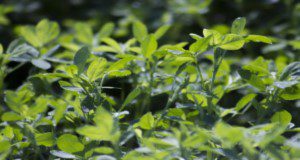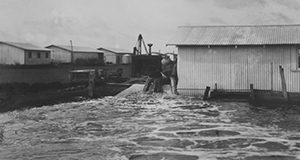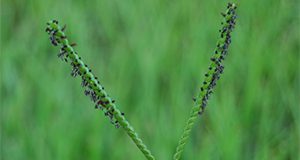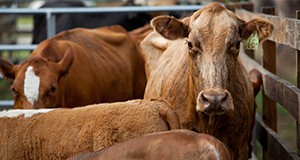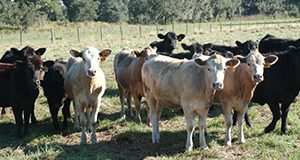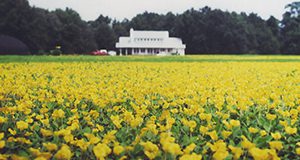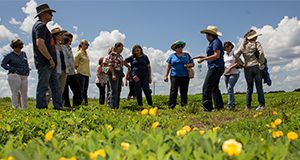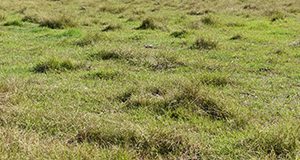The use of tannin-containing forages has received attention from researchers around the globe because of potential benefits of condensed tannins to livestock health and nutrition as well as possibilities to reduce methane emission. This new 4-page publication of the UF/IFAS Agronomy Department targets two audiences: Extension faculty who need information on potential benefits and negative effects of condensed tannins to livestock production, and producers who intend to feed tannin-containing forages in their operation. Written by Flavia van Cleef and Jose Dubeux.
https://edis.ifas.ufl.edu/ag440
Tag: Jose Dubeux
Hurricane Preparedness for Forage Crops in the Southeast United States
This 4-page document provides information on preparing forage crops, conserved forage, and grazing areas for potential hurricane damage and alleviating hurricane damage on forage crops and grazing lands in the Southeast United States, with an emphasis on the Florida peninsula and Gulf Coast. Written by José C. B. Dubeux, Jr. and Edward K. Twidwell, and published by the UF/IFAS Agronomy Department, November 2019.
http://edis.ifas.ufl.edu/ag439
Bahiagrass (Paspalum notatum Flueggé): Overview and Pasture Management
This 10-page document discusses bahiagrass forage cultivars, forage production, nutritive value, animal performance, planting, pasture renovation, management, and more. Written by Marcelo Wallau, Joao Vendramini, José Dubeux, and Ann Blount, and published by the UF/IFAS Agronomy Department, revised July 2019.
http://edis.ifas.ufl.edu/ag342
Estimating Herbage Mass on Pastures to Adjust Stocking Rate
This new 6-page document explains methods to measure forage mass and utilize that information to estimate an adequate stocking rate. Written by Jose Dubeux, Marcelo Wallau, João Vendramini, Liliane Silva, Jane Griffin, Nicolas DiLorenzo, and Erick Santos, and published by the UF/IFAS Agronomy Department, June 2019.
http://edis.ifas.ufl.edu/ag434
Overseeding Rhizoma Perennial Peanut Pasture and Hay Fields during the Cool Season
Hay and livestock producers want to know if they can overseed their rhizoma peanut fields with cool-season forages during rhizoma perennial peanut dormancy. This new 5-page document discusses overseeding for hay and overseeding for grazing. Written by Jose Dubeux, Cheryl Mackowiak, Ann Blount, David Wright, and Luana Dantas, and published by the UF/IFAS Agronomy Department, January 2019.
http://edis.ifas.ufl.edu/ag426
Forage-Based Heifer Development Program for North Florida
Developing replacement heifers to become productive females in the cow herd is a tremendous investment in a cow-calf operation that takes several years to make a return. Fortunately, there are several options to develop heifers on forage-based programs that can help reduce costs while meeting required industry performance targets. This new 4-page document proposes a model for replacement heifer development based on forage research trials at the UF/IFAS North Florida Research and Education Center (UF/IFAS NFREC) in Marianna, FL. Written by Jose Dubeux, Nicolas DiLorenzo, Kalyn Waters, and Jane C. Griffin, and published by the UF/IFAS Agronomy Department, October 2018.
http://edis.ifas.ufl.edu/ag424
Ecosystem Services Provided by Grass-Legume Pastures
Grasslands produce far more than beef and milk. They provide ecosystem services that benefit people and the environment. This new 3-page document discusses how integrating forage legumes into grasslands enhances their capacity to provide ecosystem services, such as C sequestration, habitat for wildlife and pollinators, water catchment and purification, and nutrient cycling. Written by Jose Dubeux, Jr., Lynn Sollenberger, Mark Mauldin, and Liza Garcia, and published by the UF/IFAS Agronomy Department, October 2018.
http://edis.ifas.ufl.edu/ag423
Strip-Planting Rhizoma Peanut into Grazing Systems
Nitrogen (N) is one of the major off-farm inputs in livestock systems, either in the form of N fertilizer or purchased feed. Fortunately, you can reduce those expenses by growing your own nitrogen using forage legumes. Rhizoma perennial peanut (RPP) is a legume adapted to the Florida environment that grows well in mixtures with bahiagrass. This 4-page fact sheet discusses varieties, establishment, weed management, grazing management, and the cost-share program. Written by Jose Dubeux, Lynn Sollenberger, Joao Vendramini, Marcelo Wallau, Ann Blount, Liza Garcia-Jimenez, Erick Santos, and David Jaramillo, and published by the UF/IFAS Agronomy Department, July 2018.
http://edis.ifas.ufl.edu/ag421
Brunswickgrass or Paspalum nicorae: A Weed Contaminant in Southern Pastures and Bahiagrass Seed Production Fields
Brunswickgrass (Paspalum nicorae Parodi) is becoming a problematic weed in summer perennial grass pastures in the Southeast. The plant is competitive with bahiagrass
and bermudagrass. Since it is less palatable, it can eventually dominate a perennial grass pasture. Brunswickgrass has become naturalized and has reportedly contaminated bahiagrass seed fields and pastures in the southeastern states, including some of the important counties for seed production in Florida, such as Gilchrist, Levy, Alachua, Citrus, and Sumter. This 4-page fact sheet provides an overview of brunswickgrass and discusses its appearance, variety/germplasm, and management. Written by Ann Blount, Marcelo Wallau, Brent Sellers, Dennis Hancock, Leanne Dillard, Jose Dubeux, Cheryl Mackowiak, Joao Vendramini, and Clay Cooper, and published by the UF/IFAS Agronomy Department, April 2018.
http://edis.ifas.ufl.edu/ag408
